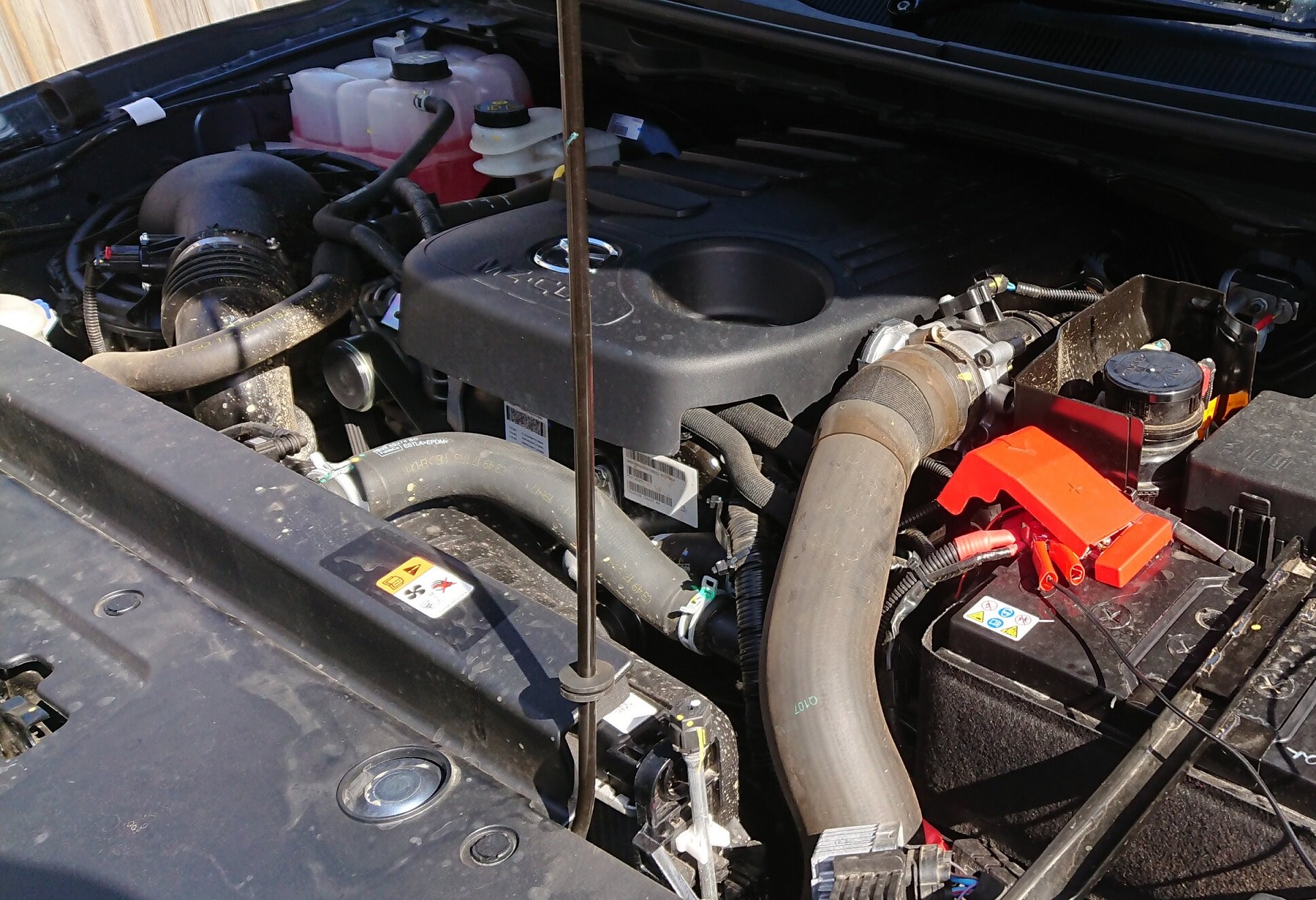The truth about engine coolant
Coolant, down there, in your radiator: what a bullshit term, ‘coolant’. Ushering in the new year, let’s squeeze in one last beer garden physics brain bleed and set the record straight. Here goes…
As you may know, the automotive industry is famous for its production of bullshit, across several domains - including applied science.
We have so-called ‘radiators’ that reject waste heat by convection, not radiation, and so-called shock absorbers that don’t really absorb roadgoing shocks (that’s what springs are designed to do).
The term ‘coolant’ is even worse. We’ll get to that in just moments. And what that green stuff really does.
Today’s cavalcade of intracranial beer garden bleeds is inspired by several covert thermodynamics and geography laureates hidden among us in the YouTube comments feed.
These people have once again rekindled my hatred of yet classic bullshit automotive term: ‘coolant’:
Thong bikinis are such a waste of material .... And stop saying water, it's coolant. And why don't you celebrate Christmas on June 25 at the beginning of winter ?
- T5rux Lee.
Just to address these peripheral (but important) automotive issues: Christmas. Even here, in the mentally retarded southern hemisphere, June 25 would not actually constitute the proper fake birthday of the fake son of the fake Christian God.
And even though we’re a proud secular democracy here in Shitsville, with a Federal Government of ratbag right-wing God-bothering lawyer arseholes, who flee by example every time the country burns, I think it’s important we keep our Bronze Age bullshit globally harmonised.
Secondly, I disagree strongly here on the vexed question of the thong bikini and it being a waste. Sometimes less really is more, in my view. And I have spent a great deal of time testing various hypothes(es) on this. None of it wasted, I think you’d agree.
The thong bikini, of course, successfully developed by proud Arse-trailerian fashion luminary, Seymour Butts, while on holiday at Indonesia’s stink bug eradication paradise, Bintan Island.
I’m being told the thong bikini was actually invented on a nearby island, in the same Indonesian archipelago. Poontang Island.
Bintan Island? Isn't that just a fancy name for Bali?
- Tone 167
No. No it’s not. Bali is definitely Poontang Island. Trust me on this. I looked it up on TripAdvisor.
I’d suggest, if they taught applied physics using this kind of cognitive warm-up technique, using hotties and humour, everyone would just get it. Except feminists and vegans, perhaps. Just one 15-second Poontang Island break every half hour is all you need to optimize your neuroplasticity - according to my exhaustive tests.
Fluid conversation
Now it’s time to pay. Coolant: Cue the engineering soap box, and pour yourself a beer. Make it a pint.
That red or green stuff you put in your radiator, mixed with deionized water, is commonly called ‘coolant’, but that’s one of the worst bullshit names ever. A ‘TTF’ or total taxonomy ‘fail’.
Not that it’s not important stuff - it is - it’s important for its anti-freeze properties. It’s important for its anti-corrosive properties…
But it actually makes the fluid worse at transporting heat, and harder to pump. So it’s anti-fucking-coolant, when you think about it. Because water is already the perfect common substance for heat transportation. It’s the best commonly available thing for holding heat energy, by a mile.
Ethylene glycol is perhaps the Coca-Cola of so-called coolant - that’s the green stuff - and its main function is to stop the fluid freezing in winter, because water expands when it freezes, problematically.
Just to spell this out, you’ve got hot water in the car’s cooling system, if you’ve just been driving. It contracts as it cools in ambient air, if it’s cold outside, and when it gets to just above the freezing point (it’s actually at 4 degrees C) it stops contracting and it starts to expand. And when it freezes, it expands by a total nine frigging per cent. Which is more than enough to crack the head or the block, or the radiator - or all three. What a trifecta.
Happily, though, a 50 per cent shandy of water and ethylene glycol laughs out loud at zero degrees C (minus 32 F, ‘Murica). This mixture will not freeze until it gets down to about minus-35 degrees C (which is about - coincidentally - about minus-35 F, ‘Murica).
So that’s nice and protective in most parts of the world, mid-winter. But not everywhere. Certainly OK here in ‘Straya.
Unfortunately, though, the mixture’s just not as good as 100 per cent water at its primary job - of moving heat out of the engine and into the appallingly-named ‘radiator’.
Boiling point
This coolant-is-not-actually-perfect-for-removing-heat concept is something a dude named Kevin Barry almost got right in the comments:
Very good explanation. Now it's time for me, as a commentor, to pick some nits. Another reason coolant doesn't boil, is it is not just water. It is a mixture of water and antifreeze. This not only lowers the freezing point but raises the boiling point. Unfortunately, it also lowers the efficiency of the fluid as a heat removing medium. But not enough to be a problem.
- Kevin Barry
Yeah - nah. If you’re going to be a total pedant, I’d suggest, you need to get it completely right. I do, however, agree with many of Big Kev’s statements. Ethylene glycol in water certainly does raise the boiling point - a bit.
A 50 per cent mix raises the boiling point from 100 degrees C to about 108 (that’s 227 F, ‘Murica). But frankly it’s quite a shit way to raise the boiling point. Just pressurising the system to 15 psi - which is about one atmosphere (gauge pressure) or two atmospheres absolute - and going back to plain old water - that raises the BP to about 120 degrees C (248 F, ‘Murica).
So if we do both (the 50:50 and the 15 psi) it raises the boiling point to about 128 degrees C (or 265 F, ‘Murica). But the heavy lifting here is done by the pressure increase. The boiling point increase from ethylene glycol is just incidental. Happy incidental, but incidental.
Unfortunately, a mixture of 50 per cent ethylene glycol and water loses about 15 per cent of the fluid’s fundamental ability to hold and transport heat, per unit mass of fluid.
The upshot of this is that when Big Kev says this characteristic of holding less heat is: ‘not enough to be a problem’ in terms of heat transport efficiency, I would retort: Please tell me you’re not about to design a cooling system for a nuclear reactor (or anything else).
When engineers design cooling systems, they think about the amount of heat that needs to be rejected by the cooling system, worst-case scenario. If you’ve got a 100 kilowatt engine, at maximum power it’s making 100 kilowatts at the crank, and at that time, about 150 kilowatts of heat needs to be rejected (by the radiator). That’s a lot.
Heated exchange
It’s hard to conceptualise, this whole heat rejection based on engine output thing, particularly if you’re an accountant or a bricklayer, or the guy who unclogs the sewer - all very important jobs performed by experts in their respective field. Especially you, sewer-unclogging dude. No disrespect is intended. Next time the shitter is backed up at my house, in the immortal words of Whitney Houston, I will always love you-ou-ou.
So, 150 kilowatts of heat is around 60 powerpoints with the biggest possible heaters all plugged in, all on full, in your engine bay. (In ‘Straya - where it’s 240 volts and 10 amps max, for a conventional wall outlet.)
So - you’d consider the worst-case ambient temperatures, you’d design a radiator taking into account the highest radiator output temperatures you can foresee, and the maximum permissible operating fluid temperature in the engine (because you don’t want the fluid to boil).
But whatever else you do, if you’re using a 50:50 mix of ethylene glycol and water, you must - and this is not optional - you must increase the water pump delivery capacity by 15 per cent to compensate for the lower heat transport capacity of the mixture, compared with plain old water.
That same mix of water and ethylene glycol is also two-and-a-half times more dynamically viscous than water - it’s more treacly (if you want the technical term). Maple-syrupy, if you live in Polite-istan (that’s Canadia, as our former Prime Mincer, Tony Abbott once brain-farted via his mouth).
So, you’d want to take all this into account (not the Tony Abbott part) in designing the radiator and the water galleries and the pump - in terms of overall resistance to flow.
If that’s “not enough to be a problem” then it’s fair to say the words mean different things on my world compared with Big Kev’s. It’s a 15 per cent problem for pump delivery, and a 250 per cent problem in terms of flow resistance - pretty significant when you’re dragging a heavy trailer up a steep hill at 80 kays an hour into a headwind on a stinking hot day, up the bum of a B-double … but only if you don’t want the vehicle to go poopy in its trousers.
And that worst operating case is when cooling systems typically fail catastrophically.
Conclusion
Now, I would like briefly to talk to you tragic EV evangelists.
To the vegans of the automotive world - self-righteously stroking your wedding vegetables in public (aka the comments feed) - please kindly do remember: all credible EVs have cooling systems to reject waste heat from charging and discharging the batteries, and also (I think) to temperature control the inverter.
And exactly the same issues pertain to those cooling systems, although they do tend to be somewhat smaller. So there’s that.
In a nutshell, coolant is a breathtakingly bullshit term for that coloured crap in your radiator. The additives are absolutely there for vitally important reasons - primarily anti-freeze properties and corrosion resistance (because aluminium and iron in the presence of an electrolyte is otherwise quite a bad idea).
But in terms of cooling performance in isolation, plain old water would be substantially better. But not the water on Poontang Island - it’s always pretty warm there.
They warm it up every day, first thing, in the traditional way, organically, with hotties, as I understand it. And you have to admire tradition. And hotties. If you know what’s good for you.






















The MG ZS is a small SUV that offers such strong value to most buyers that it should be on your shortlist be default, even when shopping for a used car. But given that no car is perfect, the price could easily distract from its drawbacks.